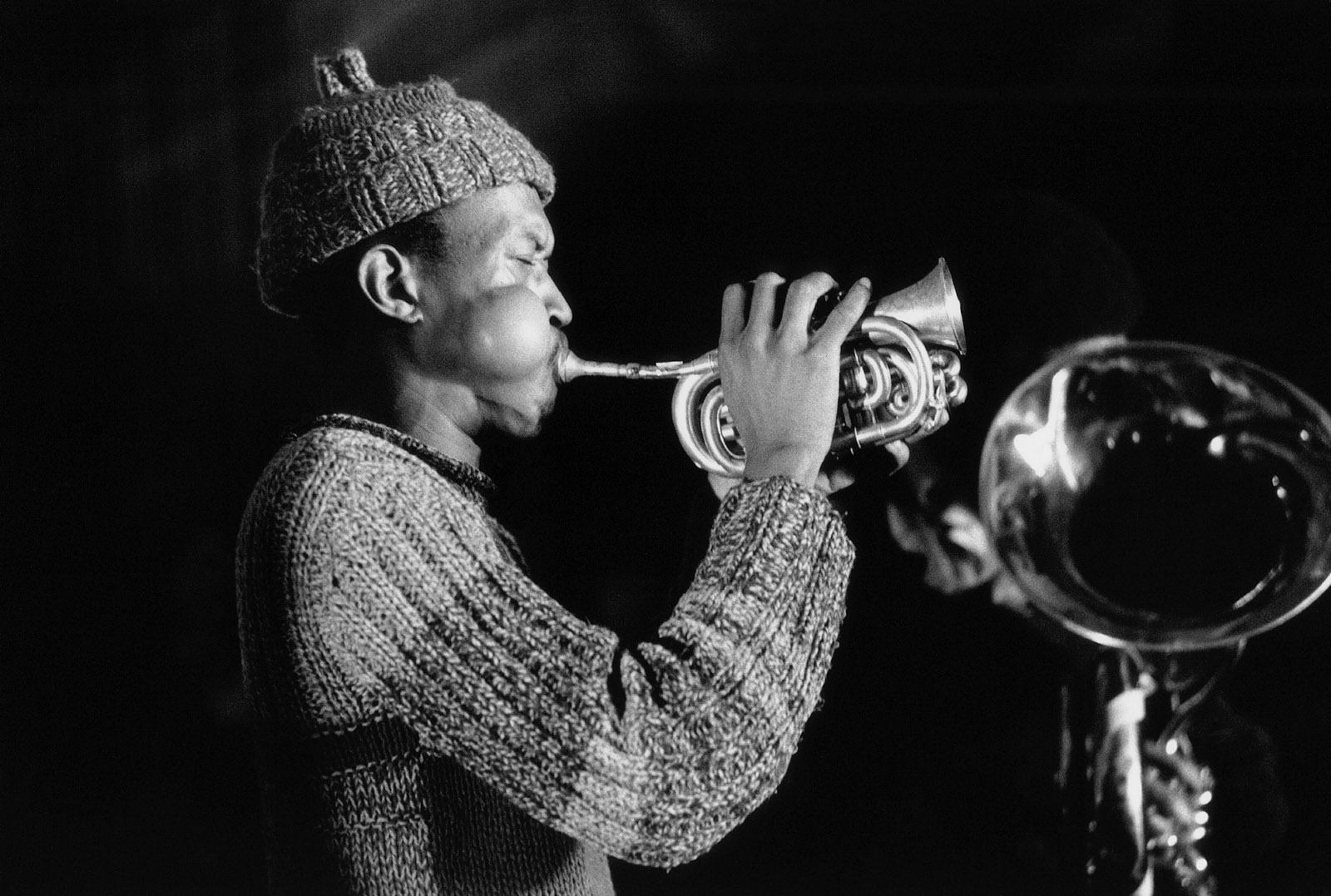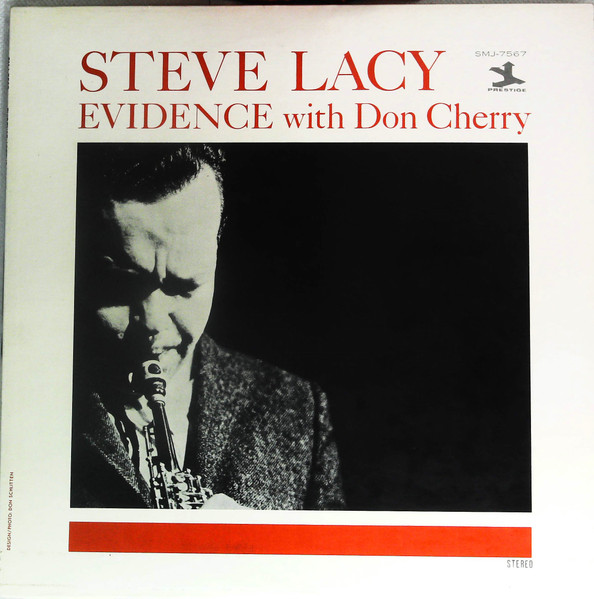A few years ago, “Don Cherry” started trending on Twitter occasionally thanks to Canadian ice hockey. These days, “Steve Lacy” is trending with some frequency, especially after the guitarist destroyed a fan’s phone onstage.
For me, Lacy and Cherry together will always mean the November 1961 studio session with Carl Brown and Billy Higgins. Evidence is a unique and fabulous one-off featuring four tunes from Thelonious Monk and two from Ellington/Strayhorn. Cherry and Higgins were Ornette Coleman associates, while both Lacy and Higgins had played with Monk, and the melodic/creative feeling of the session is really a gorgeous cross between Ornette and Monk — with just a dash of Ellington. Perfection.
The mysterious Carl Brown holds his own in elevated company. Some have suggested that Brown is actually Charlie Haden, Buell Neidlinger, or someone else with a more familiar name. This is not true. Carl Brown split the scene shortly after this date, but for a moment he was a respected NYC bassist, and he sure sounds good on this session.
“The Mystery Song” One wonders just how Lacy dug up this novelty number from 1931, for in 1961 Ellington studies were still in their infancy, with only a few early 78s re-issued on LP at that time. Ellington probably wrote “The Mystery Song” for a revue or some such while still appearing nightly at the Cotton Club. Lacy slows down the tempo and wisely cuts the “B” theme.
Ellington’s original is quite thick harmonically. What exactly are the chord changes for this updated version? Neither Lacy nor Cherry are too worried about that topic, beginning with stark octaves or minor seconds in the theme. These two true melodic geniuses wind a secret path while blowing.
The soprano saxophonist would keep on returning to the idea of Ellington’s “jungle music” for the rest of his career, but this track would remain one the best examples of this kind of Lacy-helmed “exotic groove.” Billy Higgins is so damn swinging, with his left hand holding a mallet to start.
Listening with headphones, I caught a slightly awkward edit going into the head out. Doesn’t matter. “The Mystery Song” remains one of the great opening tracks to a jazz LP.

“Evidence” The horn players drastically simplify Monk’s complicated rhythms in the theme. Some might dock them points for this “cheat,” although, to be fair, Monk never played “Evidence” this fast, and the straight hemiola used by Lacy/Cherry does work well. With Cherry and Higgins talking at this quicker pace, the music really starts to sound like Ornette’s band. The horn players improvise on the changes of “Evidence” but it’s wide open in feeling. In terms of where they were at in 1961, I’ve never heard Cherry nor Lacy sound better than their solos on “Evidence.” Pure magic.
OMG there’s an edit into the out head on this one too. Never noticed before. Some digital transfers are notably unkind to the tape era…
“Let’s Cool One” Drum breaks for Higgins in the slightly square theme. (I’ve written before, “Although he didn’t say so, I remain convinced Monk is making fun of the West Coast cool school with a supremely un-syncopated melody.”) Cherry is very bluesy in his gorgeous and extended solo. Lacy sometimes comments behind Cherry, which works well in this piano-less context. This date offers an especially fine display of Higgins’s left hand. Billy Hart told me that Elvin Jones and Billy Higgins share something in conception, and in the strut of “Let’s Cool One” I can dig what Hart is saying.
I always listened to the first side of the LP. The second side is also beautiful, but those first three tunes above are about as good as it gets.
“San Francisco Holiday” In 1961 this composition was brand new, and today it remains a lesser-played Monk tune. The inner-moving line is good for two horns. Great drum solo.
“Something To Live For” Don Cherry sits this one out. Billy Strayhorn’s ballad features sustained dramatic color tones in the melody and uneven phrasing in the form, factors that make it difficult to play well without supporting harmony. Cherry played piano in somewhat Monkish fashion…too bad he didn’t comp a few salty chords on the studio instrument for this one.
“Who Knows” Fast and amusing melody. Monk only recorded it once in the early years, in a blur of inaccurate horns: The title almost seems to mean, “Who Knows What These Notes Are.” In this rendition the connection to Ornette couldn’t be more clear. The tempo might be a shade quick for Lacy to play eighth notes; Cherry sounds more confident with his intentionally loose cornet ramble. The horn trades are fun and the spirits are high, with Higgins getting an appropriate concluding flourish.







More Stories
CD review: George Benson – Dreams Do Come True: When George Benson Meets Robert Farnon – 2024: Video, CD cover
The band was tight as ever. The Warren Haynes Band cuts loose: Video, Photos
Interview with Alvin Queen: Feeling Good – I heard these tunes played by … Video, new CD cover, Photos